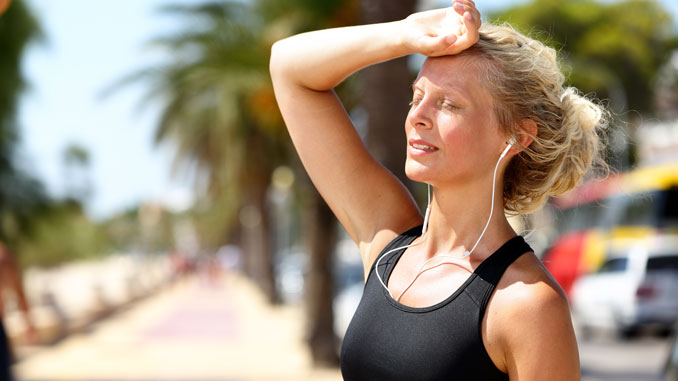
After a long, wet winter most native Californians can’t wait for warmer weather. But with those sunny California days come sky-high temperatures and the very real danger of overheating.
Overheating isn’t just a matter of being uncomfortably hot or getting hot to the point of sweating. Instead, it happens when your body can no longer keep itself cool and your core temperature begins to rise. There are three stages of heat-related illnesses. The first and least assuming is heat cramps, which can progress to heat exhaustion and then to heatstroke if not addressed.
Recognize symptoms
Heat stroke, which is considered a medical emergency, can hit when your body temperature gets to 104 degrees, significantly higher than a healthy body temperature of 97-99 degrees. But symptoms of heat cramps and heat exhaustion can appear long before that.
If you start to experience muscle cramps, excessive sweating, pale or cold skin, dizziness, or nausea, you may be dehydrated and experiencing a heat cramps or heat exhaustion.
Signs of heatstroke include unconsciousness; dizziness; lack of sweating and red, dry skin; a rapid heartbeat and rapid, shallow breathing; confusion; or seizures.
Children under four-years-old and adults older than 65 are especially at risk of overheating.
Prevention
Heat exhaustion can leave you feeling weak and nauseous, while heatstroke can cause lasting brain damage or even lead to death. Luckily, there are several precautions you can take to reduce your risk.
- Stay hydrated to avoid overheating. Be sure to keep cold water on hand, but don’t wait until you’re outside to start hydrating. Drink water before the day gets hot to ensure your body is ready to handle the high temperatures. Avoid too many caffeinated or alcoholic beverages, which can dehydrate you.
- Plan your summer days strategically. Outdoor activities should be planned for the morning or evening whenever possible. Avoid outdoor exercise in the afternoon and know when to stay inside altogether.
- Make sure kids are supervised outside and don’t play in parked vehicles. Check on family members and neighbors who might be at increased risk during the hot summer months. You may also want to invest in air conditioning to help cool indoor areas. With air conditioning installation services such as Evergreen Environmental, you can help reduce the risk of heatstroke and keep your indoor areas comfortable.
Treatment
If you or someone else is overheating, it’s important to cease all physical activity, move to a cool place, and drink water. If there are signs of heatstroke, call 911 and immediately try to cool off. Move inside or into the shade, remove unnecessary clothing, and apply ice to the armpits, groin, and neck while you wait for an ambulance.

